The Incredible Journey of Robert Smalls
Discover the inspiring story of Robert Smalls, an enslaved man who heroically commandeered a Confederate ship to secure his freedom and later became a U.S. Congressman. Explore his incredible journey of courage, leadership, and resilience that changed the course of American history.
HISTORICAL FIGURESWARS AND BATTLES
Michael Keller
3/2/202514 min read
The Incredible Journey of Robert Smalls
"My race has had the courage to do everything to earn freedom." – Robert Smalls [1]
This powerful quote from Robert Smalls exemplifies the courage and resilience that defined his extraordinary life. Born into slavery in 1839, Smalls' journey is a testament to the unyielding pursuit of freedom, even in the face of immense obstacles. Amid the chaos of the Civil War, Smalls rose from the shackles of captivity to become a bold hero of the Union Navy. His daring escape from slavery, strategic military service, influential political career, and lifelong dedication to advancing civil rights solidify him as one of America’s most remarkable figures. The story of Robert Smalls is a remarkable transformation. From an enslaved child to a liberator, leader, and enduring symbol of bravery and perseverance.
Born into Bondage, But Not Defeated
Smalls' mother, a house servant, and his father, whose identity remains unknown, played defining roles in Robert Smalls' early life. Born into a world built on oppression, he was raised under the cruel system of slavery, where every aspect of his existence was designed to keep him subjugated. Yet, despite the harsh circumstances, Smalls refused to be broken. In an era when education was a privilege denied to most enslaved people, Smalls defied the odds. He secretly learned to read and write, dangerous skills for someone in his position. Slaveholders feared education because it empowered enslaved people to challenge their oppression, but Smalls was determined to change his fate.
From an early age, Smalls was put to work in various capacities, and it was on the waterways surrounding Beaufort that he began his path toward an unexpected destiny. He worked aboard ships, gradually learning the intricate operations of sailing. These formative years were crucial, as Smalls was not just learning to perform basic tasks but developing a deep understanding of the ships themselves. He learned how to navigate, steer, and manage a vessel’s crew. All skills that would later make him indispensable to both the Confederate and Union forces.
By his teenage years, Smalls found himself aboard the Planter, a Confederate warship stationed in Charleston Harbor. The Planter was used for a variety of military purposes, from transporting cargo to carrying out reconnaissance missions. As a young, enslaved man working on the ship, Smalls was tasked with menial duties, but he quickly rose through the ranks, showing an uncanny aptitude for seamanship. His natural talent, combined with his tireless work ethic, earned him the respect of the crew.
Though still enslaved, Smalls' ability to understand the ship’s operation soon caught the attention of his superiors. He eventually became the Planter’s pilot, a position that placed him in charge of steering the vessel and overseeing its missions. This was no small feat, as piloting a ship was a complex responsibility. Smalls not only had to understand the tides, the mechanics of the vessel, and the tactics used by the Confederate Navy, but he also had to be familiar with the layout of Charleston Harbor, one of the most heavily guarded Confederate strongholds at the time. His rise to this position was a testament to both his natural intelligence and his determination to rise above the circumstances of his birth. [2]
At this point, the question likely arises: Why would a Confederate warship trust an enslaved man with such an important role? The answer lies in the unique nature of the Planter. It was a vessel with a mixed crew of both free and enslaved people. While the Confederacy was built on a racial hierarchy that excluded enslaved people from most positions of power, the practical realities of war meant that many enslaved men were entrusted with important roles, especially in cases like Smalls' where their knowledge and expertise were irreplaceable. Smalls was no mere servant; he was a key figure in the daily operations of the ship, and his work made him indispensable. As he learned more about the ship, his role expanded, and his relationship with his fellow crew members grew more complex, setting the stage for what would become a pivotal moment in both his life and the history of the Civil War.
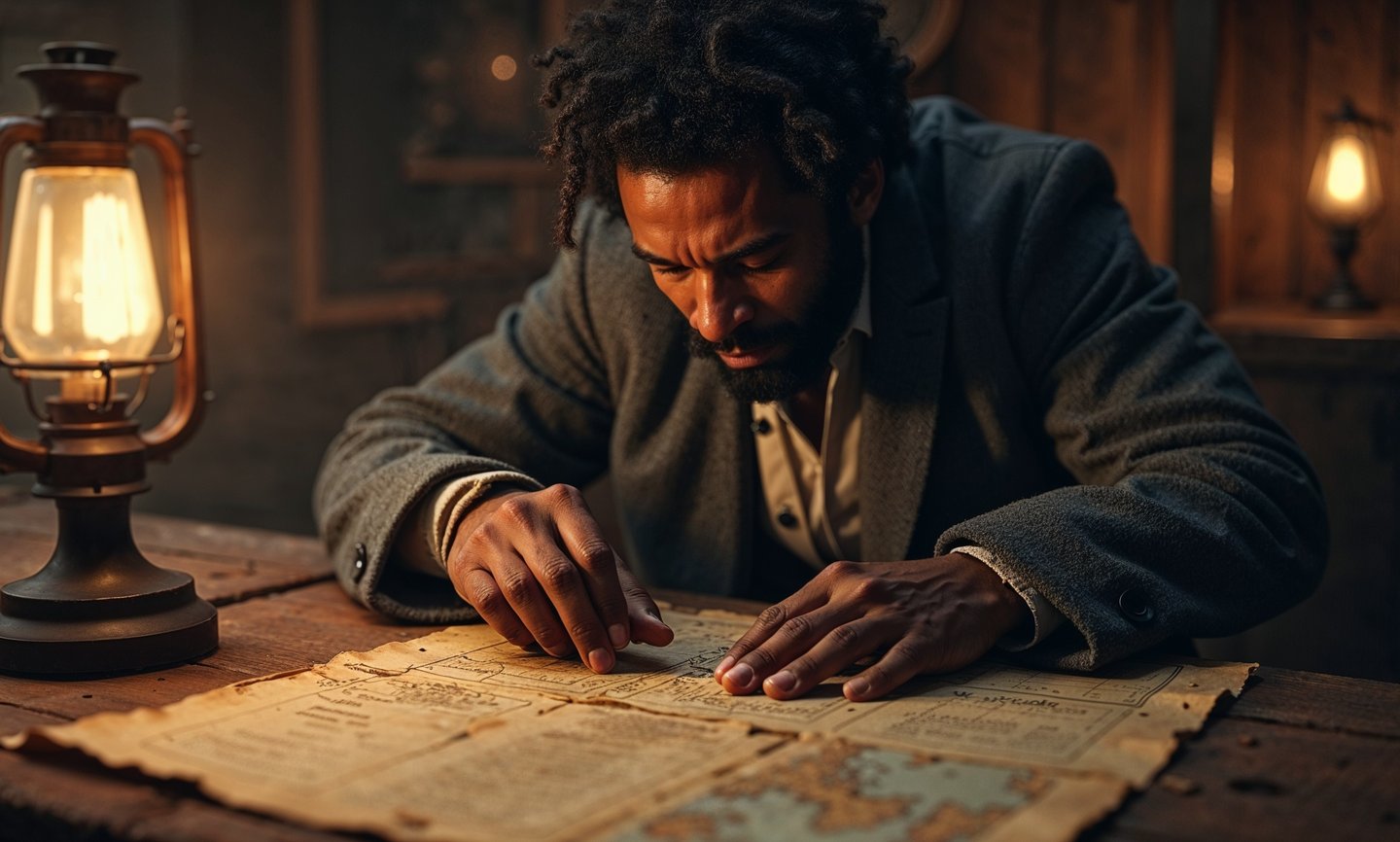

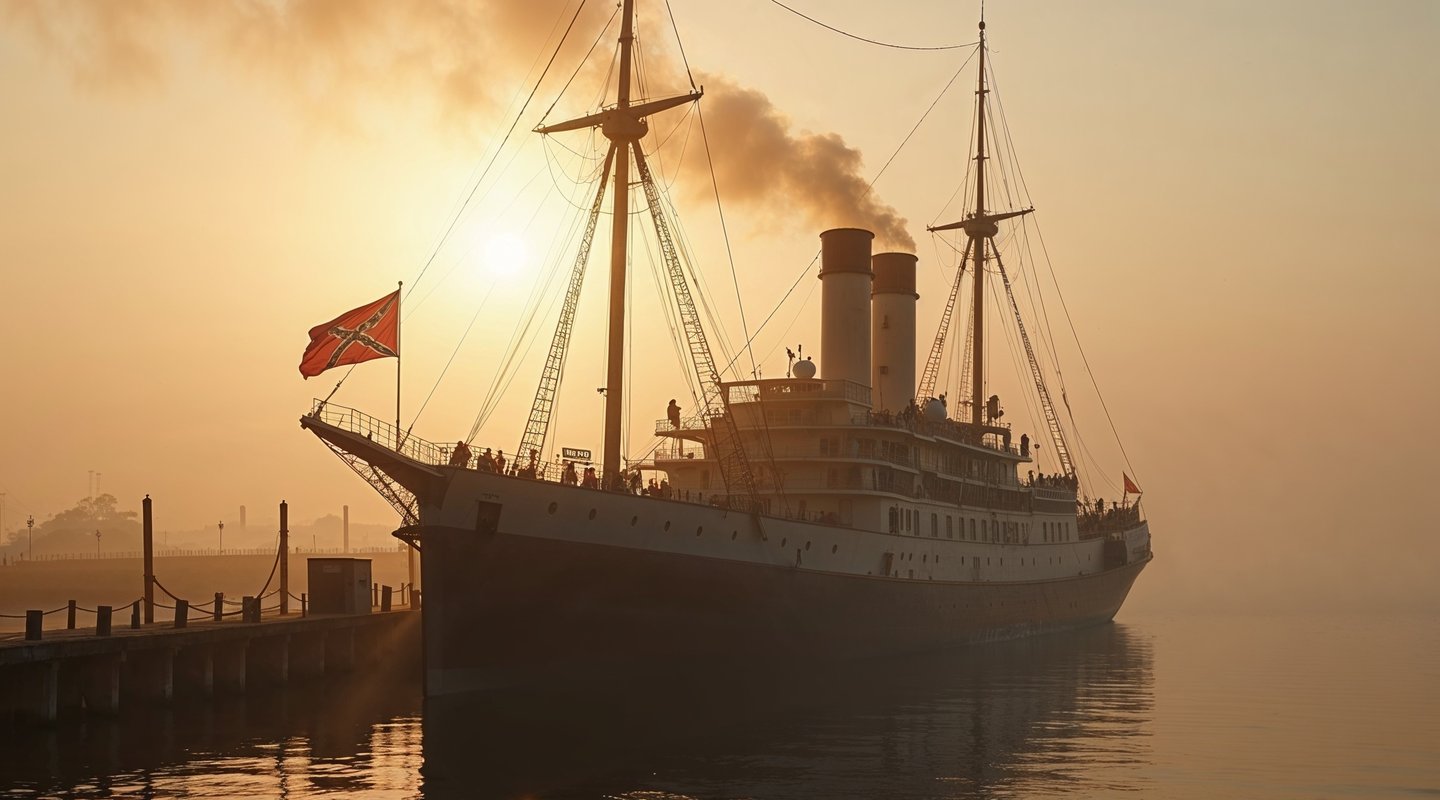

The Daring Escape
On the morning of May 13, 1862, Robert Smalls faced a moment that would define his life and shape history. [3] Years had passed, and Smalls continued working aboard the Planter. He knew its every move, its crew, and its routine. But this morning was different. Smalls had a plan, one that was as dangerous as it was daring. Surrounded by the Confederate forces and with no room for error, he would need all his wits and courage to pull it off. Every decision, every move would have to be executed flawlessly, or else the consequences would be deadly.
Smalls had been meticulously planning this escape for months, studying the ship's routine, observing the movements of Confederate soldiers, and memorizing key details that would be crucial for success. He involved a small, trusted group of enslaved crew members, each of whom understood the gravity of the situation and the peril they faced. Smalls carefully communicated his plan to them, knowing that any slip-up could mean disaster. He spoke to his wife and children, making sure they understood the risks and the opportunity ahead. The trust they placed in him was immense, but Smalls’ reputation as a leader among the enslaved crew gave them the confidence to follow him. Over time, he solidified his plan, refining the details and ensuring that everyone involved was ready for the life-or-death mission ahead.
A Champion for Civil Rights
After the Civil War, Robert Smalls didn’t just enjoy the freedom he had fought for, he transformed it into a platform for advocating for the rights of African Americans. Far from resting after his daring escape and service to the Union, Smalls immediately understood that true liberation went beyond physical freedom. It required full social, political, and economic equality, which would take years of hard work and systemic change.
In 1868, just a few years after the war ended, Smalls was elected to the South Carolina State Senate. [12] It was an extraordinary achievement for an African American man in the post-Civil War South, where former Confederates were fiercely resistant to Reconstruction efforts. Smalls, however, was undeterred by the challenges. Once in office, he worked tirelessly to improve education for Black citizens. Recognizing that access to education was one of the most important ways to ensure lasting freedom and empowerment, he pushed for legislation that would provide better schools for African American children, who had been denied an education for generations under slavery. [13]
Smalls was also deeply involved in improving infrastructure in South Carolina, knowing that economic development was vital for the newly freed population. He fought for better roads, public facilities, and transportation systems that would benefit all citizens, but particularly the Black community, which had been kept isolated and impoverished for so long. [14] These reforms were essential not just for economic growth but also to ensure that African Americans could fully participate in the new society.
Another critical area of Smalls’ advocacy was land ownership. Under the Homestead Act, African Americans were allowed to own land, a significant step toward economic independence. Smalls supported this policy in South Carolina, where many freed people were struggling to make a living after the war. [15] Land ownership was a means of securing a lasting place in the economy and society, offering stability that had been withheld from Black families throughout slavery. Smalls understood that economic freedom was intertwined with land, and he worked to make this opportunity accessible to freed Black people.
Smalls’ dedication to Black rights didn’t end at the state level. In 1875, he was elected to the U.S. House of Representatives, where his work continued to center on securing equal rights for Black Americans during the Reconstruction era. [16] In Congress, Smalls advocated for voting rights, knowing that the ability to vote was fundamental to ensuring that Black citizens could participate fully in the political process. He also fought for the establishment of policies that would provide greater access to education and property ownership for African Americans, who were still facing significant discrimination and barriers. Smalls’ role in Reconstruction helped lay the groundwork for the civil rights movements that would emerge later in the 20th century. His political career was marked by an unwavering commitment to building a more inclusive and just America for all people, regardless of race.
Despite the many obstacles he faced, including the constant threat of violent backlash from white supremacists, Smalls never wavered in his mission. His leadership during Reconstruction was not just about legislation; it was about standing as a living example of what Black Americans could achieve. He used his position of influence to advocate for a future in which African Americans could thrive, one that would eventually inspire generations to come in the fight for civil rights. [17]
The Unseen Forces Behind Change
Sometimes, the most transformative figures in history aren’t the ones whose names are widely known or whose actions are immediately recognized as monumental. Robert Smalls, though celebrated in certain circles today, wasn't the loudest voice in the room, nor the most celebrated figure in his era. His influence didn’t come from dramatic speeches or public spectacles, but from quiet, steadfast actions that laid the groundwork for generations to come. What makes his life so striking isn’t simply the dramatic moments but the broader, more enduring shifts that took place long after the immediate events.
Smalls’ contributions offer a powerful reminder that change often comes from unexpected places. While many think of history in terms of large, visible movements or famous names, it’s often the seemingly small acts that reverberate across time. Smalls didn't need a microphone or a stage to leave his mark; his actions rippled through society, slowly eroding old structures and replacing them with more just ones. It’s not the singular, well-known escape or the legislation that stands out, but the quiet, persistent ways his story became a tool for shaping others' lives.
The impact of his work isn’t always found in history books or grand commemorations, but in the communities he affected, both during his time and in the centuries following. In many ways, Smalls embodies the countless people whose names are not etched in history but whose lives shaped it just as profoundly. The ongoing fight for justice, equality, and dignity is often fueled by the collective efforts of people like him, individuals who may not be remembered by name but whose contributions move society forward, step by step, year after year.
Perhaps the most significant lesson of Robert Smalls' story is that every person, no matter their beginnings or status, has the potential to spark significant change. Smalls reminds us that the fight for freedom and equality is far from linear. It is not a singular event but a web of actions and ideas that weave through generations, each one building on the last. His story, often understated, is a reminder that real progress takes time, and that sometimes, the smallest ripple creates the largest wave.
In May 1862, Robert Smalls, a courageous 23-year-old slave in Charleston, South Carolina, pulled off an audacious escape that would make him a Union hero. With his family hidden aboard a Confederate steamer, Smalls commandeered the ship, running a deadly gauntlet of Confederate fortifications to deliver the vessel and its powerful weaponry to Union forces. His daring act not only secured his own freedom but also challenged national perceptions of African Americans' fight for liberty.
Smalls' journey from slave to civilian boat pilot, to the first Black captain of an Army ship, to U.S. Congressman is one of resilience and achievement. Be Free or Die captures the remarkable life of a man who defied the odds and left a lasting impact on history.
The plan was anything but simple. He would sail the Planter out of Charleston Harbor, past heavily guarded Confederate checkpoints, and into Union-controlled waters. Every aspect of the mission had to go perfectly, or the consequences would be devastating. Smalls knew that Confederate ships patrolled the waters, ready to intercept any vessel attempting to escape. Yet, his deep understanding of the harbor’s geography and Confederate routines gave him an edge. His knowledge of Confederate operations wasn’t just helpful, it was vital for success.
He knew, for example, he could not simply sail the Planter out of harbor without drawing suspicion. So, he devised a clever disguise. He wore the uniform of the ship's captain, a bold but calculated move that would allow him to confidently pass through Confederate checkpoints. [4] By impersonating the captain, Smalls blended into the normal operations of the ship, thus avoiding scrutiny. As he sailed closer to the final barrier of Confederate guards, he performed a final act of deception: Smalls raised a white flag, a universal symbol of surrender. This gesture, which might have normally raised alarm bells, instead signaled to the guards that all was well.
The timing had to be flawless. The guards, who were accustomed to seeing the captain and crew in the usual routine, would not suspect anything. As the ship moved closer to Union waters, the tension was palpable. The Confederate soldiers, lulled into a sense of normalcy, did not question the Planter's passage. Smalls' gamble paid off. As the ship cleared the final checkpoint, he exhaled. He had done it! He had successfully navigated the Planter past the Confederates and into Union territory.
This escape wasn’t just remarkable because of Smalls’ cunning. What truly set it apart was the unwavering trust of his fellow enslaved crew members. In the face of such immense danger, they placed their faith in Smalls. These men, who had endured the same brutal system of slavery, followed him without hesitation. Smalls had not only earned their trust but had also become their leader in this moment of life or death. [5]
Though the plan had been risky, Smalls’ calm leadership and unshakable determination were essential to its success. The escape was more than just a personal victory, it was a collective act of courage. Smalls led the Planter to freedom, but it was the trust and unity of the people aboard that made the escape possible.
A Strategic Asset to the Union
When Smalls sailed the Planter into Union-controlled waters, he was met by the Union Navy’s blockading fleet. The Union Navy understood immediately that he had come from the Confederate side. They also recognized that his intimate knowledge of Confederate vessels, tactics, and strategy would be an enormous asset to them. [6] His escape did not just secure his own freedom, it marked the beginning of his critical role in aiding the Union cause. After his daring getaway, he was able to offer a wealth of knowledge that would help shift the course of the Civil War.
Having spent years aboard the Planter, Smalls was intimately familiar with the ship's layout, its weaponry, and its daily operations. This expertise gave the Union Navy a significant tactical advantage. [7] The Planter was no ordinary vessel; it was a Confederate supply ship with several heavy guns, and it had been involved in critical Confederate missions. Smalls' detailed understanding of how it operated and how to navigate the waters around Charleston Harbor allowed the Union forces to use it strategically against the Confederacy. [8]
Smalls quickly became a trusted pilot for the Union Navy, known for his knowledge of Confederate routes, ports, and naval tactics. [9] He would use this information to guide Union vessels through the dangerous waters off the South Carolina coast. His firsthand knowledge of Confederate supply lines and military movements also proved critical. As he assisted in military operations, Smalls helped the Union capture additional Confederate vessels, adding to his reputation as a skilled and courageous leader. [10]
Beyond his knowledge of the Planter, Smalls had learned crucial insights into Confederate military strategies during his years working as a pilot and overseer on the ship. He had seen firsthand how the Confederacy operated along the coast, how they communicated, and how they defended strategic points. With this knowledge, Smalls became a vital intelligence asset, providing the Union Army with information that helped guide attacks and bolster their strategies in the South. [11]
In essence, Smalls’ escape had not only freed him from the shackles of slavery but also positioned him as a critical asset in the Union’s struggle for victory. His contributions went far beyond just piloting a ship, he played an essential role in undermining the Confederate Navy, aiding in key naval operations, and directly helping the Union gain the upper hand in the South.
How do you see Robert Smalls’ journey influencing the course of American history? What lessons can we learn from his dedication and resolve?
Share your thoughts with us. For feedback or inquiries, email: contact@archivinghistory.com. We look forward to hearing from you!
Join Archiving History as we journey through time! Want to stay-tuned for our next thrilling post? Subscribe!
Follow us on Facebook, Instagram, YouTube and TikTok for captivating insights, engaging content, and a deeper dive into the fascinating world of history.
Source(s):
[1] Pease, William H., and Jane H. Pease. Robert Smalls: The Boat Thief Who Became a Civil War Hero. Urbana: University of Illinois Press, 1987.
[2] Morris, Robert. Robert Smalls: The Slave Who Became a Civil War Hero. New York: Harper & Row, 2008.
[3] McKivigan, John R., and Michael J. O'Brien. Robert Smalls and the Politics of Freedom. Chapel Hill: University of North Carolina Press, 2003.
[4] McPherson, James M. The Negro's Civil War: How American Blacks Felt and Acted During the War for the Union. New York: Pantheon Books, 1965.
[5] Harding, Vincent. There is a River: The Black Struggle for Freedom in America. New York: Harcourt Brace Jovanovich, 1981.
[6] Gates, Henry Louis Jr. The African Americans: Many Rivers to Cross. New York: SmileyBooks, 2013.
[7] McPherson, James M. The Negro’s Civil War: How American Blacks Felt and Acted During the War for the Union. New York: Vintage Books, 2003.
[8] Lopez, David M. Robert Smalls: The Boat Thief Who Became a Hero. Philadelphia: Running Press, 2015.
[9] Ward, Geoffrey C. The Civil War: An Illustrated History. New York: Alfred A. Knopf, 1990.
[10] Garrison, Philip. Brave Navigators: Stories of African Americans in the Union Navy. Boston: Beacon Press, 2008.
[11] Foner, Eric. Forever Free: The Story of Emancipation and Reconstruction. New York: Vintage Books, 2005.
[12] Simmons, William J. Men of Mark: Eminent, Progressive and Rising. Cleveland: Geo. M. Rewell & Co., 1887.
[13] DeCosta-Willis, Miriam. Notable Black American Men. Detroit: Gale Research, 1999.
[14] Williams, John Hoyt. A Great and Good Man: Robert Smalls and the Reconstruction of South Carolina. Columbia: University of South Carolina Press, 1969.
[15] Tindall, George Brown. South Carolina Negroes, 1877-1900. Columbia: University of South Carolina Press, 1952.
[16] Foner, Philip S. The Life and Times of Frederick Douglass. New York: Pathway Press, 1950.
[17] Holt, Thomas C. Black over White: Negro Political Leadership in South Carolina during Reconstruction. Urbana: University of Illinois Press, 1977.
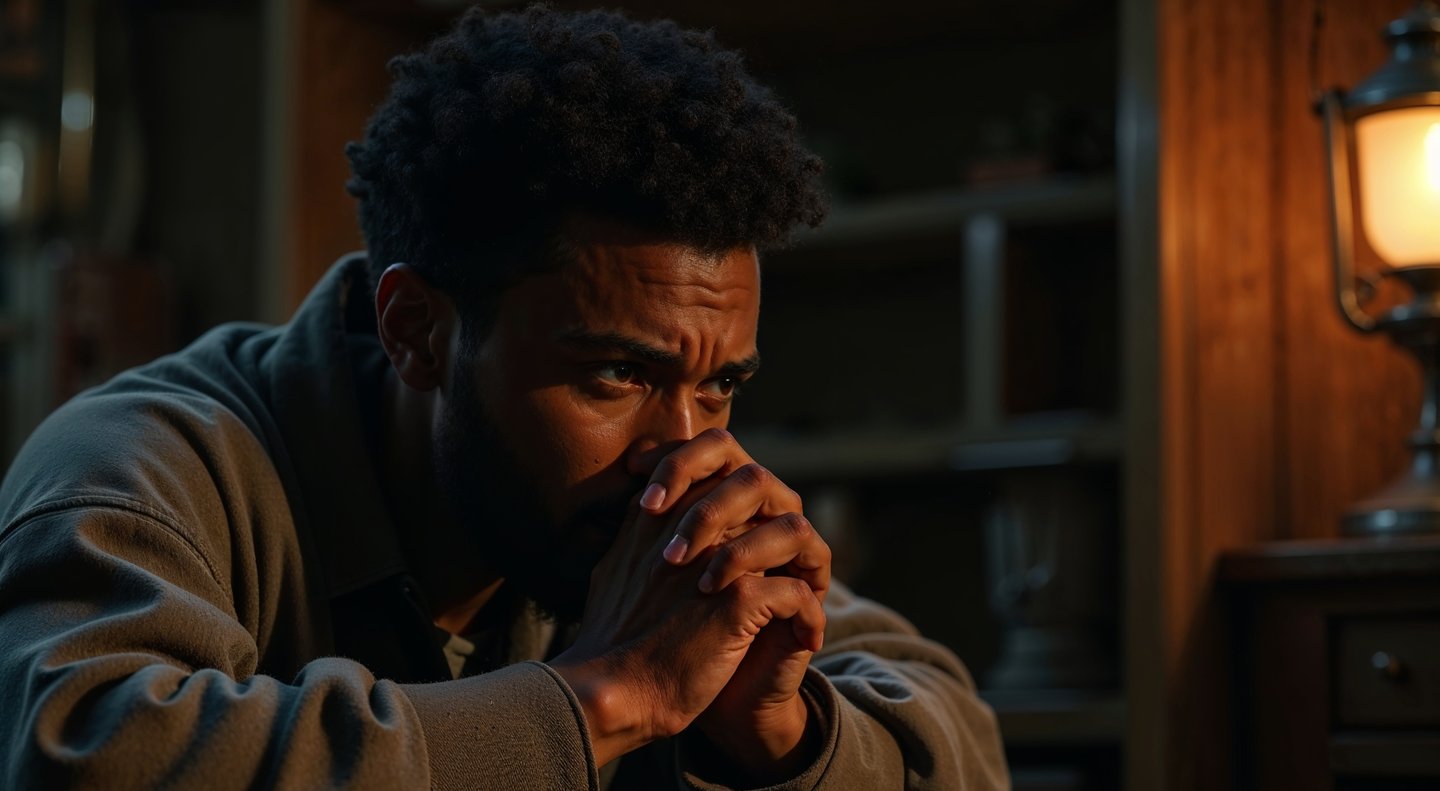

Hand Forged, polished stainless steel blade with scabbard. 28 in.
In May 1862, Robert Smalls, a courageous 23-year-old slave in Charleston, South Carolina, pulled off an audacious escape that would make him a Union hero. With his family hidden aboard a Confederate steamer, Smalls commandeered the ship, running a deadly gauntlet of Confederate fortifications to deliver the vessel and its powerful weaponry to Union forces. His daring act not only secured his own freedom but also challenged national perceptions of African Americans' fight for liberty.
Smalls' journey from slave to civilian boat pilot, to the first Black captain of an Army ship, to U.S. Congressman is one of resilience and achievement. Be Free or Die captures the remarkable life of a man who defied the odds and left a lasting impact on history.
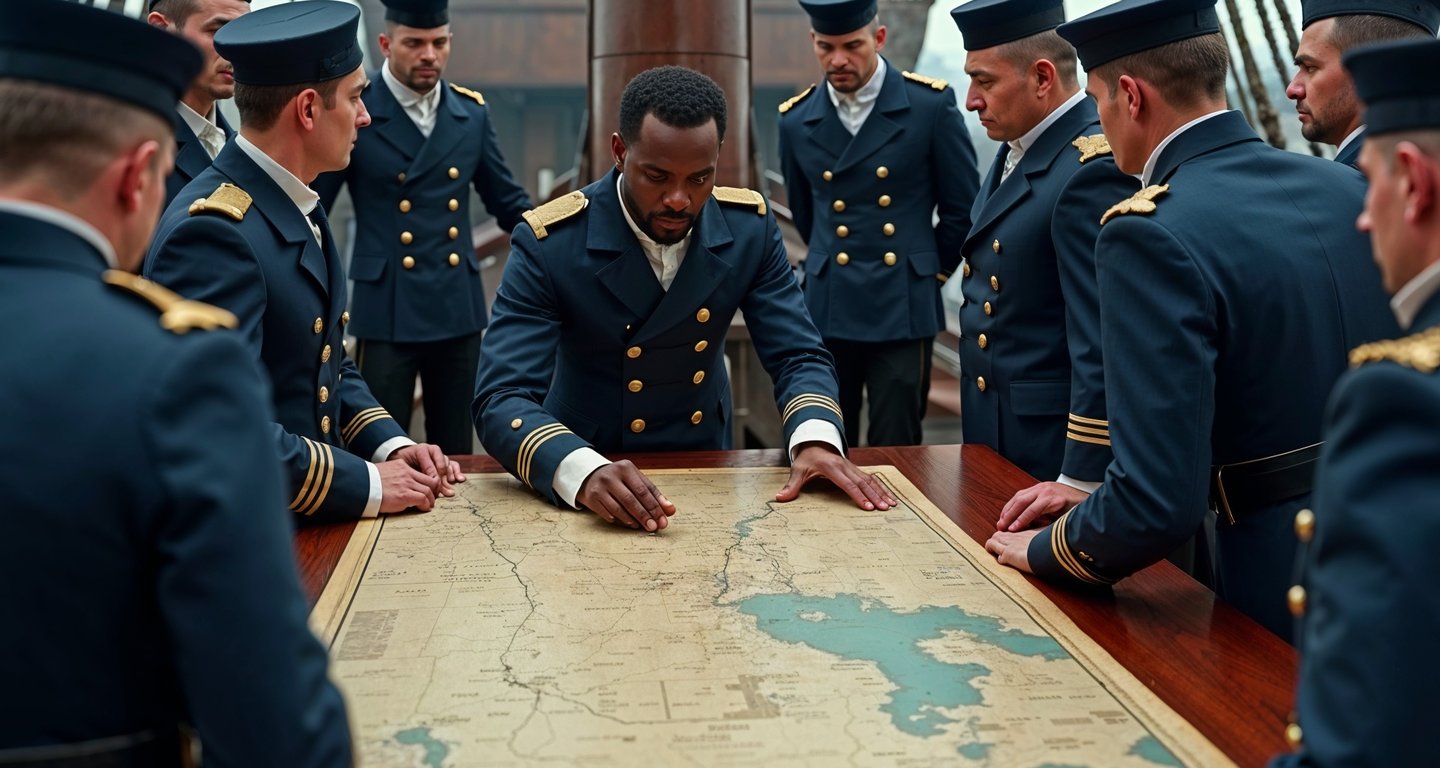

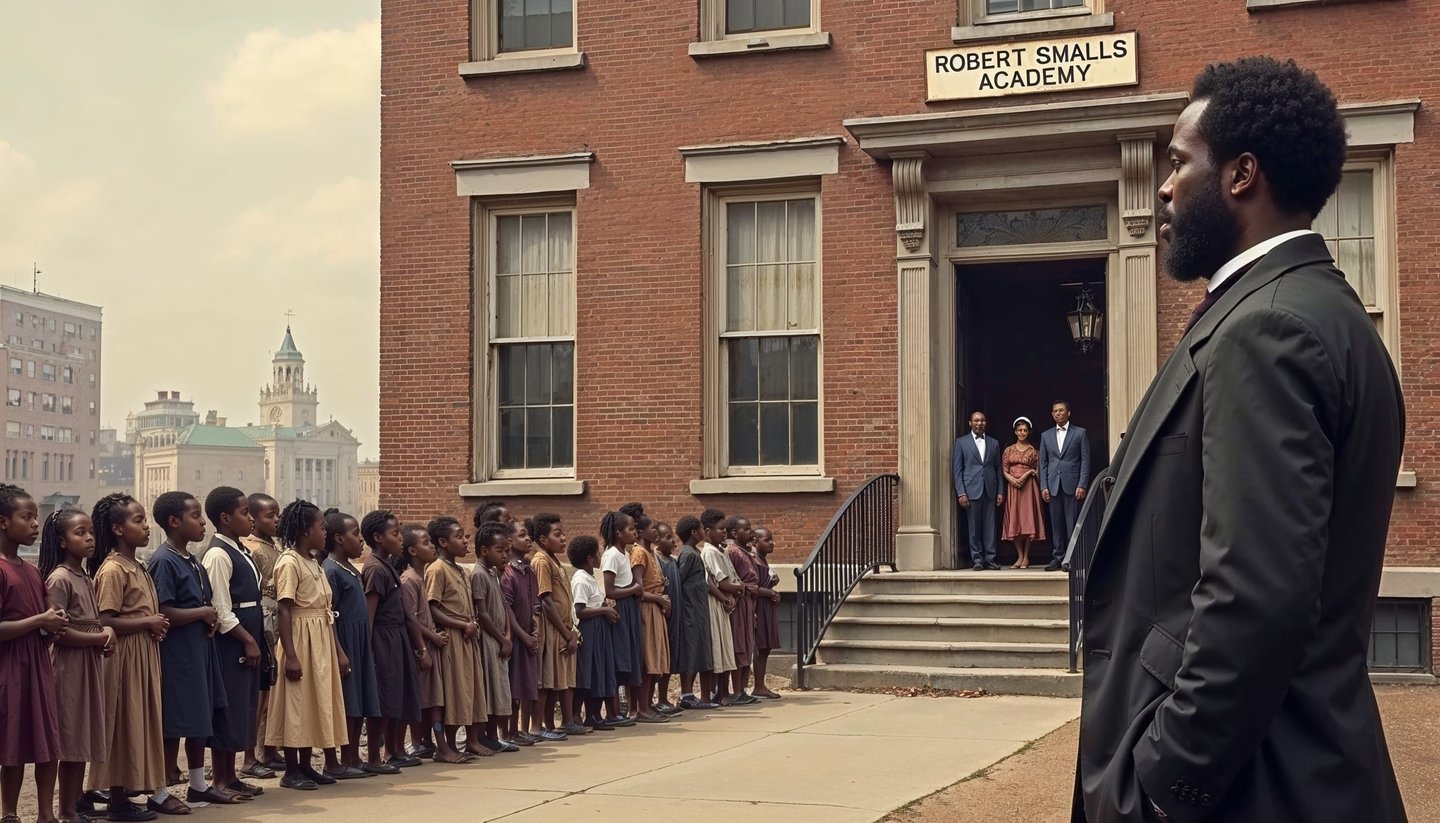

The Enduring Fight for Equality
Robert Smalls' journey from slavery to freedom is a powerful testament to his courage, intelligence, and unwavering belief in justice. His remarkable escape from the clutches of the Confederacy and subsequent service to the Union Navy set the stage for his bold political career, where he worked tirelessly to secure equal rights for African Americans. Throughout his life, Smalls faced immense adversity, yet he refused to be defined by his circumstances. Instead, he used his experiences to fuel his advocacy for the rights and dignity of his people, always striving to create a better future.
His story is more than just one of personal triumph, it is an enduring reminder of the power of resilience in the face of injustice. Smalls' contributions were instrumental in shaping the Reconstruction era, and his influence continues to resonate today. His life exemplifies the ability of one person to spark change, showing that no matter the obstacles, the pursuit of equality is always worth fighting for.








